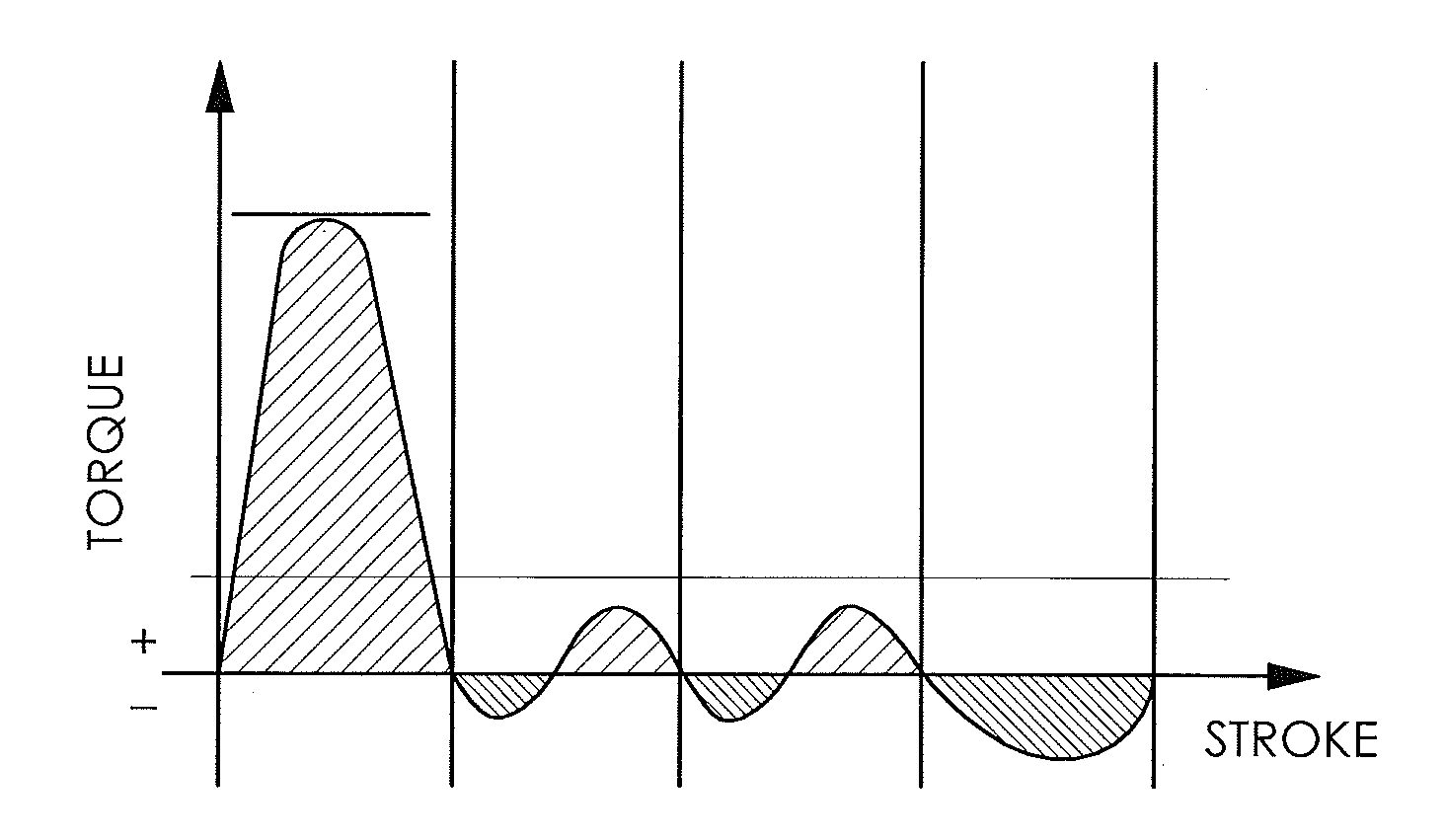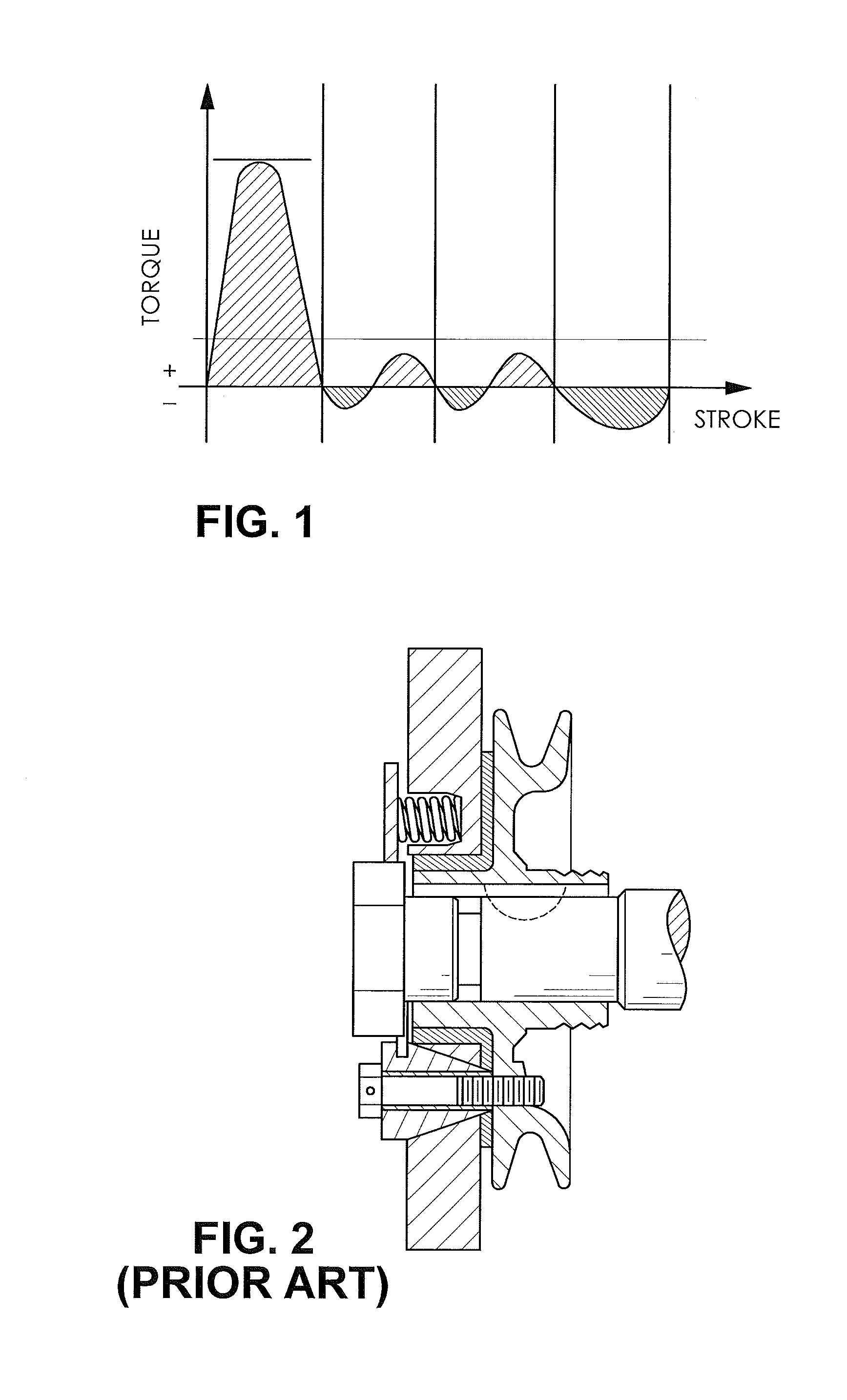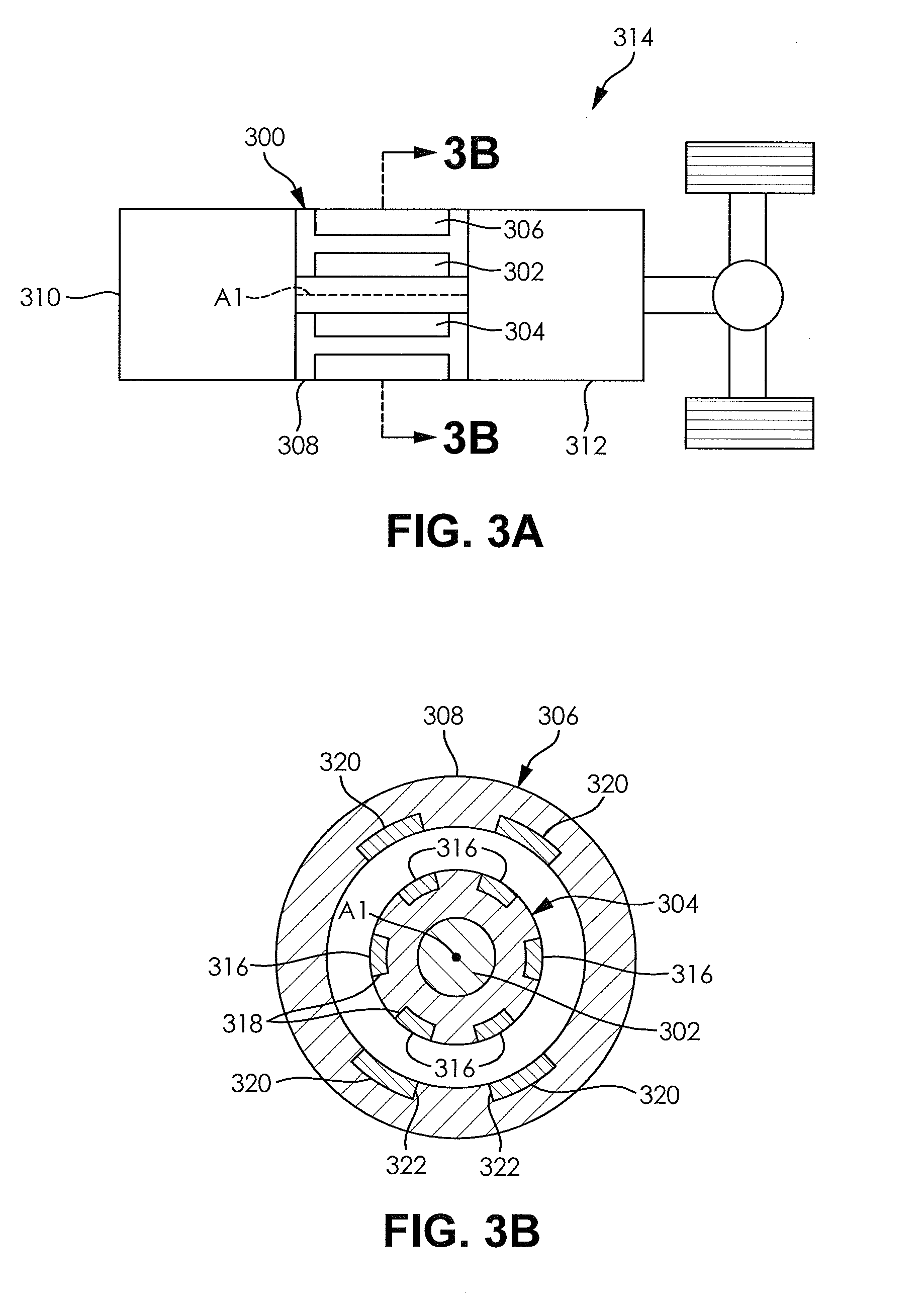Torsional compensator based on magnetic reluctance
a torsional compensator and magnetic resistance technology, applied in the direction of machines/engines, non-rotating vibration suppression, vibration suppression adjustment, etc., can solve the problems of increased stress on the components, increased wear on the components, and unsatisfactory increase in torque ripple at low operating speed of the engine, so as to dampen the torque ripple of the internal combustion engine
- Summary
- Abstract
- Description
- Claims
- Application Information
AI Technical Summary
Benefits of technology
Problems solved by technology
Method used
Image
Examples
Embodiment Construction
[0028]It is to be understood that the invention may assume various alternative orientations and step sequences, except where expressly specified to the contrary. It is also to be understood that the specific devices and processes illustrated in the attached drawings, and described in the following specification are simply exemplary embodiments of the inventive concepts defined herein. Hence, specific dimensions, directions or other physical characteristics relating to the embodiments disclosed are not to be considered as limiting, unless expressly stated otherwise.
[0029]FIGS. 3A and 3B illustrate a torsional compensator 300. The torsional compensator 300 comprises a central shaft 302, a rotor portion 304, a stator portion 306, and a compensator housing 308. The central shaft 302 is in driving engagement with an internal combustion engine 310 and a transmission 312 of a vehicle driveline 314. The rotor portion 304 is in driving engagement with the central shaft 302. The stator portio...
PUM
 Login to View More
Login to View More Abstract
Description
Claims
Application Information
 Login to View More
Login to View More - R&D
- Intellectual Property
- Life Sciences
- Materials
- Tech Scout
- Unparalleled Data Quality
- Higher Quality Content
- 60% Fewer Hallucinations
Browse by: Latest US Patents, China's latest patents, Technical Efficacy Thesaurus, Application Domain, Technology Topic, Popular Technical Reports.
© 2025 PatSnap. All rights reserved.Legal|Privacy policy|Modern Slavery Act Transparency Statement|Sitemap|About US| Contact US: help@patsnap.com



